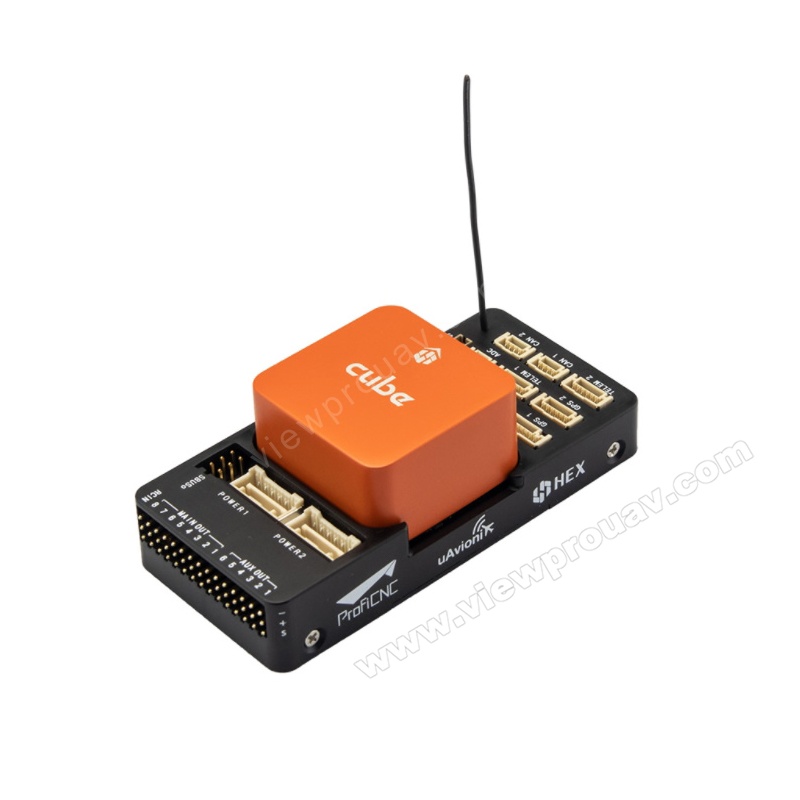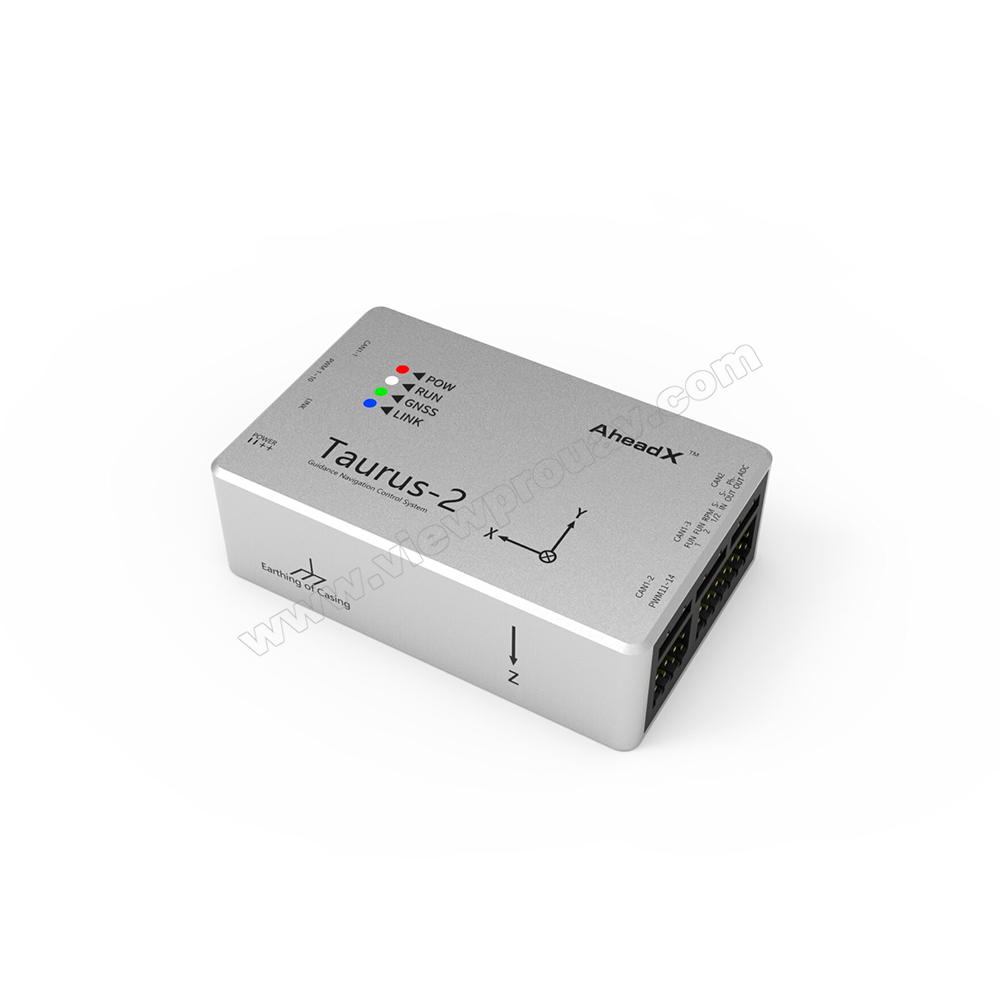The Future of UAVs: SparkNavi Drone Flight Controller and GNSS/INS Made in Taiwan
Checking Out the Duty of Drone Flight Controllers in Enhancing Flight Stability and Navigating Efficiency
The improvement of drone technology has actually considerably raised the value of flight controllers, which act as the brain of these airborne cars. By integrating real-time information from a range of sensing units, trip controllers improve trip security and navigating performance, making certain that drones can operate smoothly even in intricate atmospheres. This discussion will certainly discover the vital elements that add to these enhancements, as well as the effects for the future of independent flight. What advancements lie in advance that could further change the abilities of drone flight controllers?

Recognizing Flight Controllers
Flight controllers are essential components in the performance of drones, serving as the minds that support and manage trip operations. These sophisticated devices procedure data from numerous sensing units, including accelerometers, gyroscopes, and GPS, to make sure that the drone maintains its designated flight course. The trip controller analyzes this information and performs commands based upon pre-defined algorithms, making it possible for the drone to reply to environmental modifications, such as wind or barriers.
The key feature of a flight controller is to preserve stability throughout flight. It achieves this by making real-time modifications to the drone's electric motors and control surfaces, making certain balance and control. Furthermore, modern flight controllers include advanced attributes such as waypoint navigating, permitting for automated flight paths and enhanced functional performance.
Comprehending the design of flight controllers is crucial for both hobbyists and professionals. As technology developments, trip controllers have actually ended up being extra compact and qualified, integrating fabricated intelligence to adapt and boost decision-making procedures to intricate flight circumstances.
Secret Components of Flight Stability
Attaining ideal flight security in drones relies on numerous key elements that function in performance to guarantee smooth and controlled operations. Central to this stability is the flight controller itself, which processes data from numerous sensors to preserve the preferred trip perspective. This consists of accelerometers and gyroscopes that gauge motion and orientation, permitting real-time changes to the drone's setting.
An additional crucial part is the digital rate controllers (ESCs), which manage the power supplied to the electric motors. By finely adjusting electric motor rates in response to trip controller commands, ESCs help keep balance and combat disruptions triggered by wind or unexpected motions.
In addition, the style of the drone's frame plays a crucial function in trip security. A well-structured framework minimizes vibrations and improves the general aerodynamic account, adding to smoother trip attributes. Finally, the integration of innovative algorithms within the trip controller help in anticipating modifications, ensuring a receptive and adaptable flight experience.
Together, these parts create a natural system that improves a drone's security, allowing for precise maneuvering and improved performance in various trip problems.
Navigating Performance Techniques
Efficiency in navigating is crucial for maximizing drone operations, especially in complicated settings. Effective navigating methods enhance the ability of drones to traverse difficult terrains and prevent challenges, thus boosting functional effectiveness and security.
One famous strategy is the implementation of innovative GPS and inertial dimension units (IMUs) that supply accurate place monitoring and alignment information. These modern technologies enable drones to compute optimal trip paths in real-time, considering various variables such as wind conditions and possible challenges.
An additional technique involves making use of algorithms for course planning and optimization. Algorithms such as A * and Dijkstra's formula can be released to identify one of the most efficient route while lessening power usage and trip time. Incorporating equipment discovering versions can enable drones to adaptively discover from their environments, enhancing navigating capacities via experience.

Effect On Autonomous Drones
The integration of sophisticated navigation strategies has actually greatly transformed the capabilities of autonomous drones, allowing them to operate with better freedom and precision. SparkNavi drone flight controller and GNSS/INS made in taiwan. These enhancements are primarily credited to advanced flight controllers that utilize real-time data handling and sensing unit fusion, anchor permitting drones to navigate complex atmospheres seamlessly
The influence on self-governing drones prolongs beyond plain navigation; it encompasses improved barrier avoidance, boosted stability throughout dynamic problems, and enhanced mission dependability. By leveraging formulas that incorporate artificial intelligence and expert system, drones can adapt to changing situations, making notified decisions that enhance their trip courses while reducing dangers.
In addition, the implementation of durable flight controllers has actually helped with the execution of complex tasks, such as have a peek at this site aerial inspections, shipment solutions, and farming monitoring, with marginal human intervention. This capability not only improves operations but likewise lowers human error, consequently enhancing general safety and security.
As an outcome, the operational scope of self-governing drones has actually broadened significantly, making them indispensable devices in various sectors. Their ability to do efficiently in diverse situations underscores the important duty that advanced flight controllers play fit the future of unmanned aerial systems.
Future Trends in Trip Control
Often, improvements in trip control technology are poised to redefine the landscape of drone procedures in the coming years. Emerging fads indicate a substantial shift towards boosted artificial knowledge (AI) assimilation, allowing trip controllers to process real-time data a lot more efficiently. This evolution will certainly promote improved decision-making abilities, permitting drones to adapt to dynamic environmental problems autonomously.
Moreover, the application of artificial intelligence formulas is anticipated to boost anticipating maintenance, thereby lessening downtime and expanding the lifecycle of drone components. This positive technique to upkeep why not check here will certainly be critical as drone applications expand across different markets, from farming to logistics.

.png)
Lastly, developments in protected communication procedures will attend to safety and security and regulatory worries, ensuring that drones can operate seamlessly in congested airspaces (SparkNavi drone flight controller and GNSS/INS made in taiwan). Collectively, these patterns point towards a future where flight control systems are not only smarter and more likewise capable yet reliable of running securely in a progressively integrated airspace
Verdict
In final thought, drone trip controllers are essential to enhancing flight security and navigating performance with the advanced processing of sensing unit information. By maintaining ideal trip perspectives and employing sophisticated formulas for path optimization and barrier avoidance, these controllers considerably add to the freedom and functional safety of drones. As innovation continues to progress, further advancements in trip control systems are prepared for, assuring enhanced performance and broadened abilities in the realm of unmanned airborne cars.
By incorporating real-time data from a variety of sensing units, trip controllers improve flight stability and navigating performance, making certain that drones can run smoothly even in complex settings.Trip controllers are indispensable parts in the performance of drones, offering as the minds that handle and maintain trip procedures. In addition, modern-day trip controllers integrate advanced features such as waypoint navigating, allowing for automated flight courses and boosted functional effectiveness.
Central to this stability is the flight controller itself, which refines information from different sensors to preserve the preferred trip perspective.In final thought, drone flight controllers are important to improving trip security and navigation efficiency through the innovative handling of sensor data.